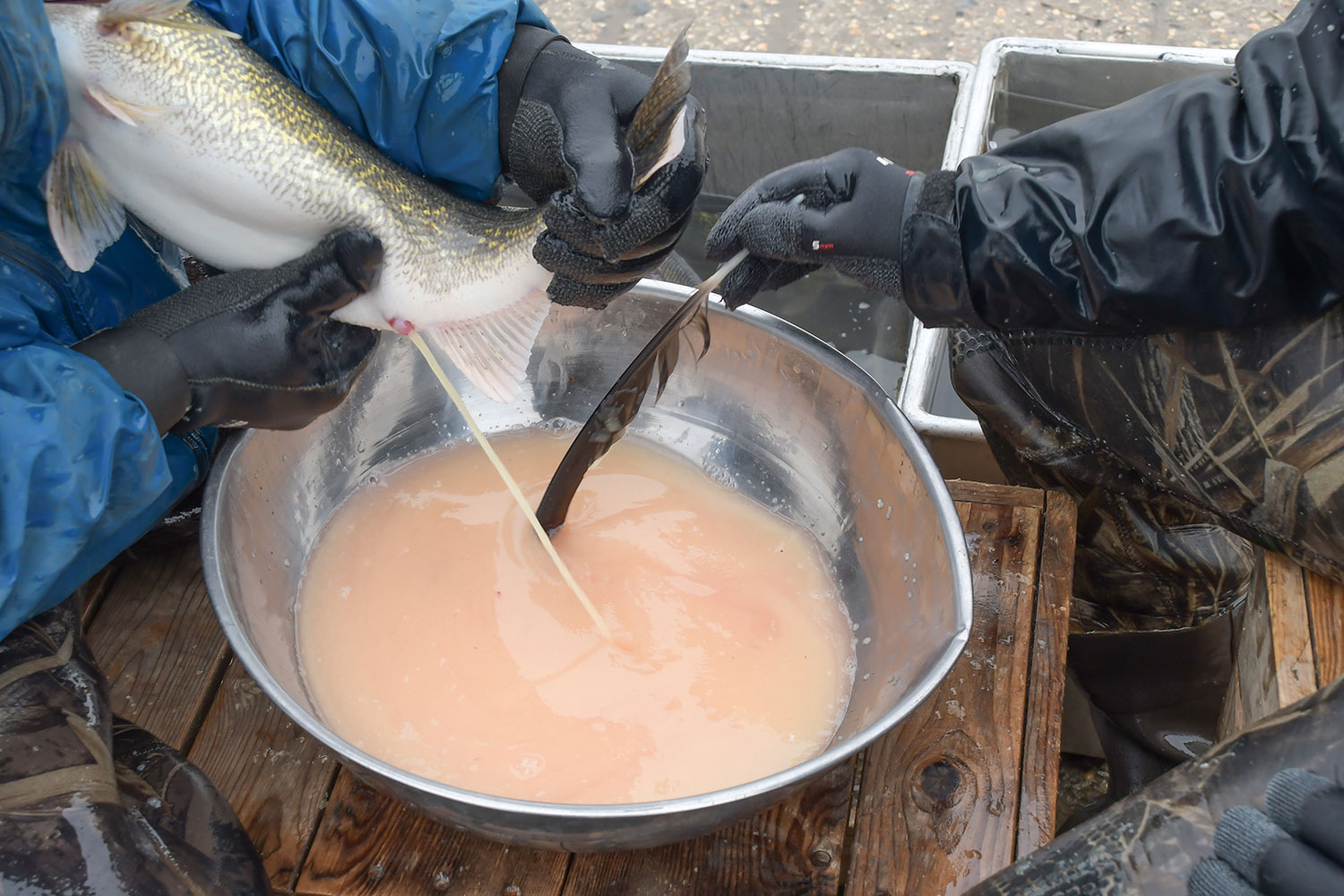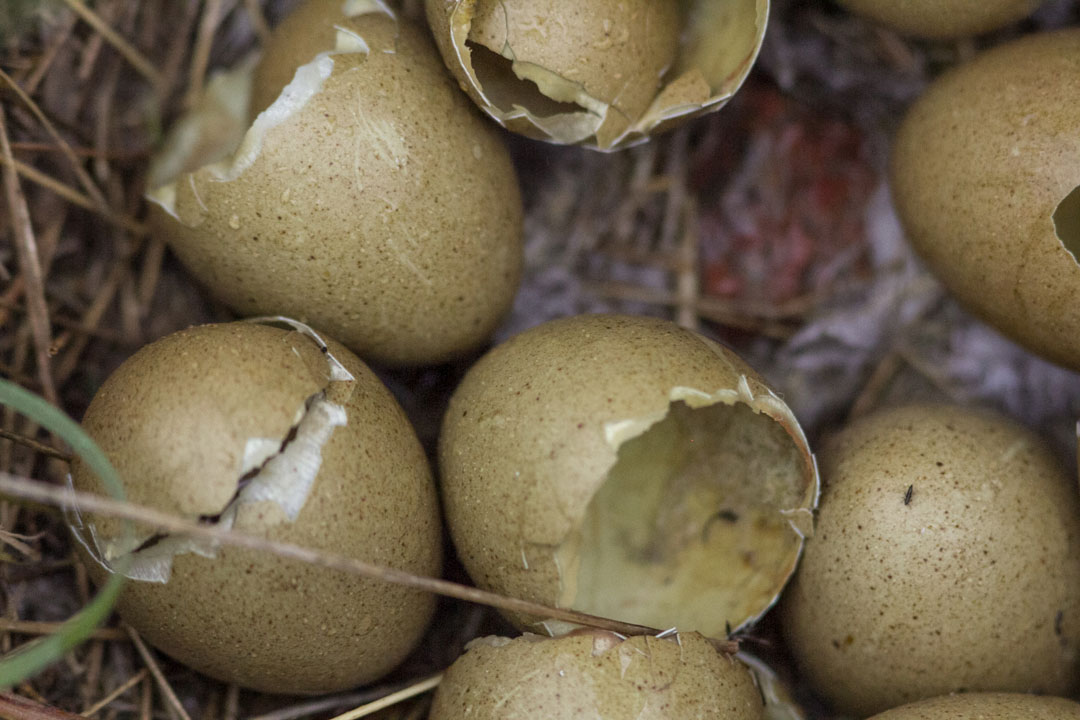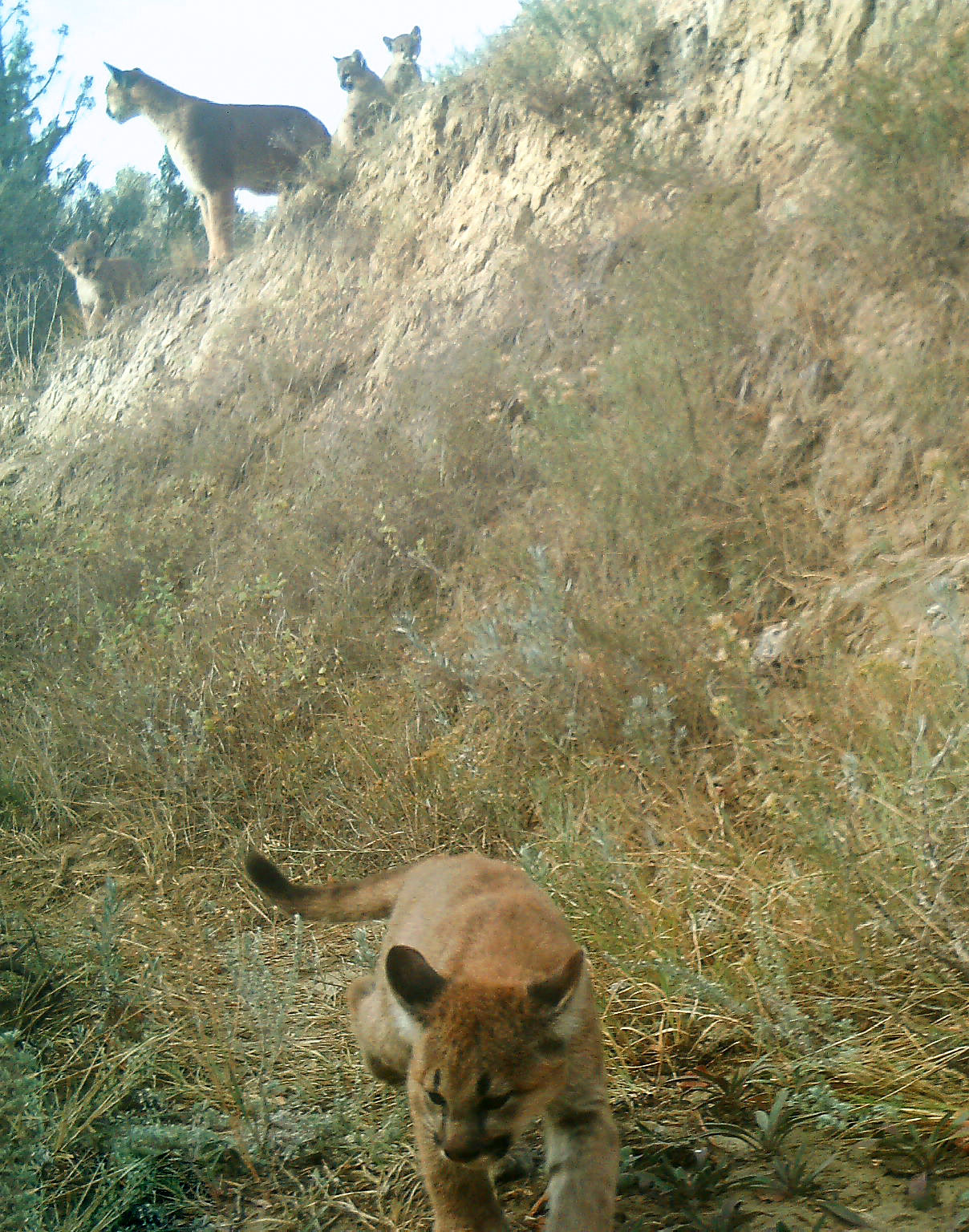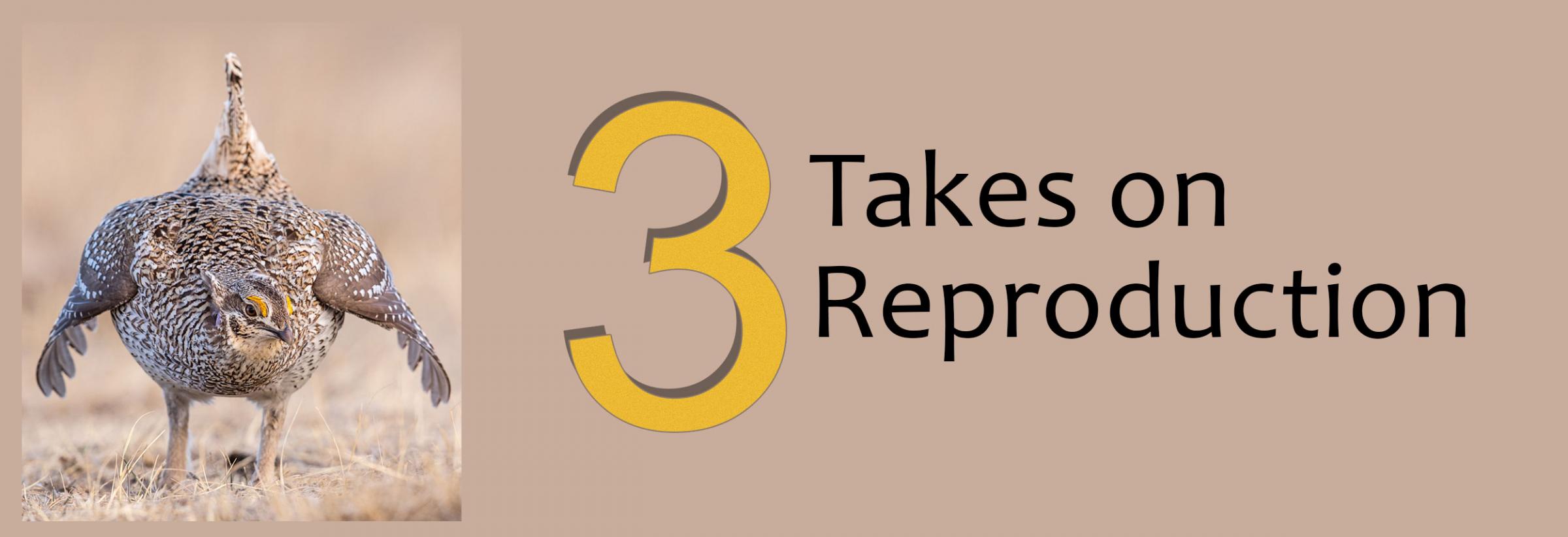Putting an accurate count on the number of different animal species in North Dakota is difficult to do. We have our share of year-round residents, like the black-capped chickadee, boxelder bug, plains hog-nosed snake and least shrew that are hearty enough to shoulder everything from a summer heat wave to a January Alberta Clipper.
Others are harder to tally, like the American golden plover, which nests near the shores of the Arctic Ocean and winters in South America but is a treat for attentive birders during its spring and fall migrations through our state. And some, like the opossum and black bear, are only occasional visitors.
Whatever the exact tally, North Dakota has an enormous diversity of animals that live in the state or simply visit.
Equal to this diversity in wildlife is the variety of reproductive strategies these animals employ. These reproductive strategies combine many different factors including age at maturity for parents, number of offspring produced, level of offspring development, what parental care is provided, and life expectancy. All these factors combine in ways that provide both advantages and disadvantages to the animal’s goal of passing on their genes.
Taking a closer look at the reproductive strategies of just three of our resident animals – walleye, sharp-tailed grouse and mountain lions – puts this diversity on display.
More Eggs Than Necessary
On one end of the reproductive extreme we have most of North Dakota’s fish species, walleye included. From the time it hatches, a walleye’s goal is to survive and grow as quickly as possible to a size where it has a reasonable chance of competing for reproductive success. In most North Dakota waters, male walleyes grow most rapidly until reaching about 15 inches in length and 3 years of age. At 15 inches, they have a fighting chance to vie for space alongside a spawning female and can produce enough sperm to give each egg a chance at fertilization.

Walleye from the Missouri River System
North Dakota’s female walleye most often reach sexual maturity at 18-20 inches and 5 years of age. Similar to males, a female walleye’s rate of growth slows after reaching sexual maturity as the fish devotes some of its resources into egg production … something female walleye do exceptionally well.
Photoperiod (day length) and water temperature combine to let walleye know when it is time to reproduce. As day length increases in spring and water temperatures warm into the low to mid-40s, walleye seek suitable shallow, gravel areas to deposit their eggs. Female walleyes broadcast their eggs over gravel and the males in attendance, likely several, will release sperm to fertilize the eggs. Mom and dad are now out of the picture and provide no parental care. The eggs are slightly adhesive and stick to gravel where they develop for roughly two weeks (depending on water temperature) before hatching.
The number of eggs a female walleye produces is influenced by her size and condition. In other words, a large female that has abundant food will produce more eggs than a smaller fish in need of a meal. Healthy fish populations contain many more small fish than fish of large sizes, so most of a walleye population’s egg potential lies in small- to medium-sized females rather than fish of trophy size. The North Dakota Game and Fish Department collects an average of 70,000 eggs from each female walleye during spring spawning operations. This results in enormous reproductive potential for the population.
As an example, the Department routinely encounters over 500 mature female walleye during spring netting and spawning operations at Lake Oahe’s Beaver Bay. Collectively, 500 Beaver Bay female walleye have an egg potential of approximately 35 million eggs. When you consider that 500 fish represent a small portion of the mature female walleye in the bay, and that Beaver Bay contains just a small portion of all the female walleye in Lake Oahe, the Lake Oahe walleye population likely has the potential of producing over 100 billion eggs each spring.
This is where a walleye’s reproductive strategy becomes clear. Walleye produce many more eggs than necessary and Mother Nature sorts out how many eggs will hatch and survive to adulthood.
Continuing with the Lake Oahe example, walleye reproductive success tends to be excellent when good environmental conditions exist. These conditions include water management by the U.S. Army Corps of Engineers that leads to stable to rising water levels during and immediately following the walleye spawn, stable springtime weather without high wind events (rapid temperature swings and high winds can cause significant egg mortality), and abundant zooplankton forage for newly hatched walleye to feed on.
These conditions were met on Lake Oahe in spring 2009, producing one of the best years of walleye reproductive success, and strongest walleye year-classes, ever documented on Lake Oahe. Just two years later, Lake Oahe’s forage base was decimated by the 2011 Missouri River flood. This lack of forage, especially zooplankton, resulted in extremely poor walleye reproductive success in spring 2012.
This reproductive strategy is advantageous in that it allows walleye to quickly increase in numbers when environmental conditions are favorable, while limiting reproductive success when conditions are poor. This strategy has proven especially useful for walleye in Lake Oahe. The amount of water that Mother Nature provides, and how that water is managed by the corps, is the primary factor governing the quality of the fishery. Both floods (1997 and 2011 for example) and droughts (1988-92 and 2001-08 for example) have periodically impacted this walleye fishery by reducing available habitat and causing forage shortages. On the flip side, environmental conditions and water level management that favor forage fish production and walleye reproduction, growth and survival have produced extraordinary results.

The Game and Fish Department takes advantage of the walleye’s high reproductive potential by collecting eggs from select populations.
This reproductive strategy is given important consideration as walleye populations are managed by the Game and Fish Department. The Department has not stocked walleye in the Missouri River or Lake Oahe since 1981 and is relying on natural reproduction to maintain the fishery. Thus, ensuring that there are enough female walleye to get the job done is essential.
As we learned more about the factors that govern walleye reproductive success on Lake Oahe and the rest of the Missouri River System (including Lake Sakakawea), it became very clear the number of female walleye in the population was not a limiting factor for reproductive success. Considering this, the Department opened the entire Missouri River System to year-round angling in 1975 (lifted the spring fishing closure) to provide additional opportunity to anglers. The rest of the state followed in 1993.
The decision to remove the spring fishing closure in 1975 stirred up lively debate among many anglers, some sure that this would decimate a popular walleye fishery. While most of North Dakota’s anglers are appreciative of the year-round angling opportunity, these debates tend to be rehashed each spring.
We have now gone 46 years since the last spring fishing closure on Lake Oahe (and the entire Missouri River System) and it has been 40 years since the last hatchery walleye were stocked between Garrison Dam and the North Dakota and South Dakota border. And yet, this walleye population has maintained itself through natural reproduction, all while having a diverse size structure of fish, including fish to trophy sizes.
The Department neither encourages nor discourages anglers from harvesting female fish full of eggs in spring. Rather we advise that they make the ethical decision to only harvest what they can use within the regulations. We now have 46 years of history that indicates that this is an effective management strategy for maintaining North Dakota’s high-quality walleye fisheries, while maximizing the opportunity anglers have to enjoy these fisheries. This is due, in large part, to a walleye’s extreme reproductive strategy.
Having walleye populations maintain themselves through natural reproduction is desirable. However, many of our state’s waters lack suitable habitat or have salinity levels that are too high to allow walleye reproduction, but otherwise have good conditions for supporting a walleye population (Alkaline Lake in Kidder County is an example). In these cases, the Department takes advantage of the walleye’s high reproductive potential by collecting eggs from select populations (Lake Sakakawea, Devils Lake, and Lake Oahe have commonly served as walleye egg sources). We then work in partnership with the Garrison Dam and Valley City national fish hatcheries to hatch and raise those fish and stock them where needed throughout the state.
A Race to Maturity

Native sharp-tailed grouse
If you’ve spent enough time on North Dakota’s backroads, you’ve likely on occasion had to brake for sharp-tailed grouse. In this discussion regarding reproductive strategy, these native birds are once again in the middle of the road.
A sharp-tailed grouse hen only produces a small fraction of the eggs produced by a female walleye. However, sharptail hens can lay eggs when they’re 1-year-old. They can hatch out 15 or more chicks in a year, and a single male can breed several hens, so each individual grouse has the potential to replace themselves more than tenfold in a single year.
Although relatively short-lived, a hen that lives 3 years (a realistic lifespan of a wild sharp-tailed grouse) could produce 45 chicks during her lifetime, and her offspring and their offspring could be producing before she dies. It’s not hard to see how sharptail populations can rebound rapidly when conditions are suitable for successful nesting and brood-rearing.
However, sharp-tailed grouse lay their eggs on the ground (April-July) and must incubate them in their vulnerable nest bowls for 23 days before hatching. Further, after hatching, chicks are tied to the ground for the first 2-4 weeks (June-August) before they can attain any sort of sustained flight (July-September). It’s no surprise that roughly 40% of eggs laid will be food for skunks, raccoons, badgers, fox, coyotes, weasels, snakes, hawks, owls, even deer and cattle consume eggs on occasion. (Note: when abundant vertical cover is available, nest success of 80% is possible).

Sharp-tailed grouse eggs after hatching
When a sharptail’s first nest (12-15 eggs) is predated or abandoned, they’ll go on to lay a second or third nest, each time with fewer eggs. Of the 60% of eggs laid that hatch, 60% typically die from cold rains, hail or predation before they are old enough to survive on their own (40-50 days). So, despite the incredible potential, sharptail populations only grow exponentially during years when habitat conditions, weather conditions and alternate prey abundance align. More often, females produce just enough surviving young to replace themselves.
Adult sharptail survival could be high for a ground-nesting bird, were it not for their reproductive strategy. The two main bottlenecks occur in March-May while they’re congregated and conspicuous on traditional breeding grounds (called leks or dancing grounds) and in June-August while hens defend their chicks and are more reluctant to fly and easier to detect. Roughly half of the adult sharptail that die in any given year will die during April, May and June, resulting in annual survival rates of 30-60% depending on the habitat conditions and weather events.
Overall, sharptail rely on a reproduction strategy where they reach sexual maturity rapidly and need to survive 2-3 years to produce enough “disposable” eggs. Harvest unlikely affects their larger population, but highly concentrated harvest, especially of adult hens, could impact populations in areas up to two to three sections.
Protective Parenting

A mature mountain lion female and kittens captured on a trail camera in western North Dakota.
Mountain lions firmly occupy the other end of the reproductive spectrum. In other words, mountain lions produce only a few offspring in their lifetime, but they invest a considerable amount of time and effort in ensuring survival of those offspring.
A female mountain lion typically will not produce her first litter of kittens until 3 years of age, after she has reached adulthood and established a territory. A male’s only contribution to reproduction is during breeding and males do not aid in caring for young. After breeding, gestation lasts 92 days and then an average of three kittens are born.
Mountain lion kittens can be born anytime of the year, but most are birthed during July-August. Newborn kittens are only about 1 pound each but are essentially miniature versions of the adults and grow rapidly during their first year of life. It will only take about a year for that 1-pound kitten to become an 80- to 100-pound subadult.
Kittens are dependent on their mother for food until 10-12 months old and will remain under her protection in their mother’s territory until 13-18 months. Studies that have marked newborn mountain lions indicate that we can expect 50% (or less) of the kittens to survive to independence. Causes of mortality to mountain lion kittens include predation (from mountain lions or other predators), disease, starvation and accidents.
Because kitten-rearing is such a long process for mountain lions, an adult female only breeds and produces a litter about every other year. Female mountain lions have the potential to live many years (oldest documented in North Dakota was 16 years old), but most will not live past 7-8 years. Therefore, a female mountain lion with average reproductive success will likely only produce about 4-5 kittens that will survive and become independent.
As a result, the Game and Fish Department allows for only a limited mountain lion harvest compared to walleyes or sharp-tailed grouse. North Dakota’s mountain lion hunting season is controlled by a harvest limit that ensures take does not exceed reproductive output in most years.
To accomplish a sustainable harvest, we must do a good job tracking population trends. Unfortunately, mountain lions do not lend themselves well to traditional survey techniques, such as roadside or aerial counts. Therefore, we require successful hunters to relinquish their mountain lion carcasses to us after removing the pelt and edible meat. These carcasses contain important information on survival and reproduction that we then use to estimate population trends.
Because hunters are the primary cause of mortality for adult mountain lions in North Dakota, we can control the trajectory of those population trends by adjusting harvest limits and ensure sustainability in the face of limited reproductive potential.
Summary
So, which reproductive strategy is best? In short, it depends.
Walleye have evolved to live in an environment with rapid and extreme fluctuations and food availability and habitat conditions, produce large numbers of poorly developed offspring with little or no parental care, allowing the abundance of this species to fluctuate with changing environmental conditions to maximize an individual’s opportunity to pass on its genetics.
On the contrary, if a species lives in an environment with relatively stable food availability and habitat conditions, that species maximizes its likelihood of passing on its genetics by producing low numbers of well-developed offspring, providing excellent maternal care, and defending a territory.
Mountain lions excel at this strategy.
Most of North Dakota’s animals, like sharp-tailed grouse, lie between these extremes.
PAUL BAILEY, Game and Fish Department fisheries supervisor, JESSE KOLAR, Department upland game management supervisor, STEPHANIE TUCKER, Department game management section leader. The authors are listed in the order in which the animal species were presented.






